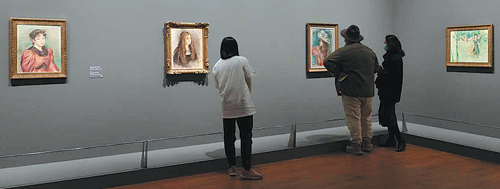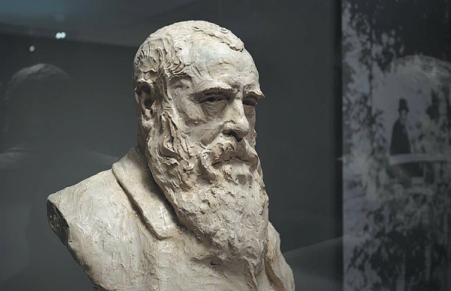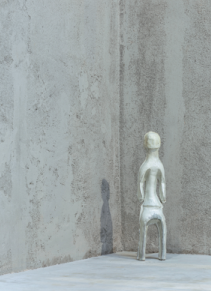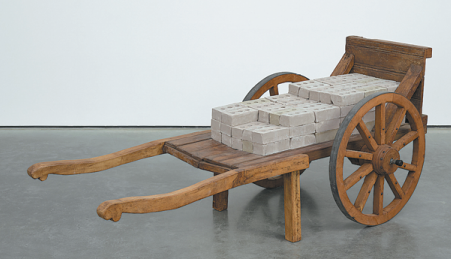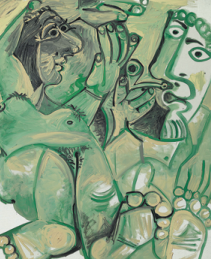A TRIUMPHANT COMEBACK

A little more than a year after the outbreak of the pandemic, Shanghai's arts and cultural scene is once again a hive of activity, Zhang Kun reports.
Shanghai's arts and cultural scene appears to have fully recovered from the pandemic, with the authorities announcing on March 18 that theaters and other public entertainment facilities could operate at full capacity.
The Chinese play Deling and Cixi, which was performed at the Shanghai Grand Theater from March 19 to 23, was the first theater production in the city to have a full-house audience since the outbreak of the COVID-19 epidemic last year.
Theaters and other public facilities in Shanghai were forced to close down for months because of the epidemic last January. Starting in March 2020, the city cautiously reopened theaters and other cultural institutions as the situation improved. In August, cinemas and theaters were allowed to operate at half of usual capacity. In mid-September, the cap was raised to 75 percent.
Zhang Xiaoding, general manager of Shanghai Grand Theater, says that being able to operate at maximum capacity also means the theater can provide more low-price tickets.
Although artists and musicians still face difficulties in traveling internationally, artworks and exhibitions from around the world have nonetheless been making their way to the city.
Impressionist art
On March 18, Bund One Art Museum kicked off its new exhibition of 61 original paintings by Claude Monet and other impressionist masters. The exhibition marked the debut of 60 of the artworks in Shanghai, according to Xie Dingwei, president of the Tix-Media Co Ltd and the founding director of Bund One Art Museum.
This is the third time Tix-Media has collaborated with the Marmottan Monet Museum in France to showcase impressionism masterpieces in Shanghai. This exhibition, like the first showcase Tix-Media presented at K11 Art Mall in 2014, documents the development of the impressionism movement and showcases 20 works by Claude Monet. The rest of the paintings are by realism masters such as Eugene Boudin, Jean-Baptiste-Camille Corot, Edouard Manet and Pierre-Auguste Renoir.
The exhibition is arranged in chronological order and features a special showroom containing Monet's masterpieces, such as the series on water lilies that depict the flower garden at his Giverny home.
Tix-Media and Marmottan had planned to present the exhibition in 2020, but the pandemic forced all international events to be postponed. Such was the anticipation for the exhibition that tens of thousands of people held on to their presale tickets and waited for the new schedule to be announced instead of opting for a refund, Xie tells China Daily.
To overcome the challenges presented by travel restrictions, new protocols and special measures were taken by the museum. Before the pandemic, the museum required onsite supervision for the loading, unloading and unpacking of the artworks. Now, these procedures can be monitored remotely through video technologies. Myriam Kryger, cultural consul of France in Shanghai, was the only person who oversaw these activities onsite. Marmottan also commissioned classical art restoration specialists based in Shanghai to check on the exhibits every other week.
Art lovers in Asia, such as China and Japan, have a strong affinity toward impressionist artworks, Xie says. "Visitors used to wait in long lines in front of the Shanghai Art Museum when impressionist art was on show in China for the first time in the early 2000s," he recalls.
Kryger shares the same sentiment, noting that Asians love impressionist art just like how impressionists were fascinated with Asian art.
Although the municipality no longer requires museums to have a visitor cap, Bund One Museum says it would still monitor visitor conditions to ensure that every visitor has a pleasant viewing experience.
Tadao Ando
At Fosun Foundation Shanghai, a retrospective exhibition of works by Japanese architect Tadao Ando is taking place until June 6.
The fourth destination of Ando's global tour, Tadao Ando: Endeavors Shanghai is the most comprehensive retrospective exhibition of the architect's career, according to Ma Weidong, one of the curators of the show.
The exhibition presents the extraordinary work of Ando over four chapters, showcasing reproductions of classic architecture works, architectural models, extensive design manuscripts, calligraphy seal cutting as well as a large number of exclusive documentaries, travel journals and photographs.
In a video clip screened at the opening ceremony, the 79-year-old architect praised Fosun's courage and dedication to producing a 1:1 reproduction of his design of the Church on the Water in Tomamu, Hokkaido, Japan.
"It will give visitors a more direct and vivid perception of my work, much better than the experience of seeing the pictures or models," he says.
Ando has three church projects in Japan. The Church of the Wind was built on a mountainside in Kobe, while the Church of the Light was built in a residential area near Osaka. The Church on the Water in Hokkaido is considered a landmark achievement for the architect.
The highlight of this exhibition includes models of a series of iconic buildings Ando created in China throughout the past decade, such as the Poly Theater in Jiading, Shanghai, the Liangzhu Cultural Heritage Center in Zhejiang province, and the He Museum in Shunde of Guangdong province.
A sister exhibition titled Beyond will kick off at the He Museum on March 30 and showcase works from 10 artists, including Pablo Picasso, Ellsworth Kelly and Richard Long, all of whom have influenced Ando's creative approach.
Theaster Gates
Another notable artist whose works are currently on show in Shanghai is Theaster Gates. The 47-year-old US artist has two solo exhibitions, China Cabinet and Bad Neon, taking place in the heart of the city.
China Cabinet, which will end on May 23, involves the reimagining of the space at Prada Rong Zhai, a museum restored from a century-old residential building located on Shaanxi Road North. The exhibition is divided into three chapters that begin unfolding in the rooms on the building's first floor. As visitors are led through his narrative, they will find that the settings change and the artist's role evolves from that of a guest to a ghost to the host of the house.
Bad Neon, which will run until Aug 29 at TANK Shanghai, features artworks by Gates from the collection of Qiao Zhibing, an important collector of contemporary art and the founding director of TANK Shanghai, an art center refurbished from giant fuel tanks in China's first airport.
Inspired by the spatial nature of the venue, Gates has transformed the unique structure of TANK Shanghai into a roller skating rink with a 1980s disco vibe, complete with neon works and sculptures in silver and gold that pay homage to the Chicago Disco Movement.
Contact the writer at zhangkun@chinadaily.com.cn
